#Indian independence day greetings
Text
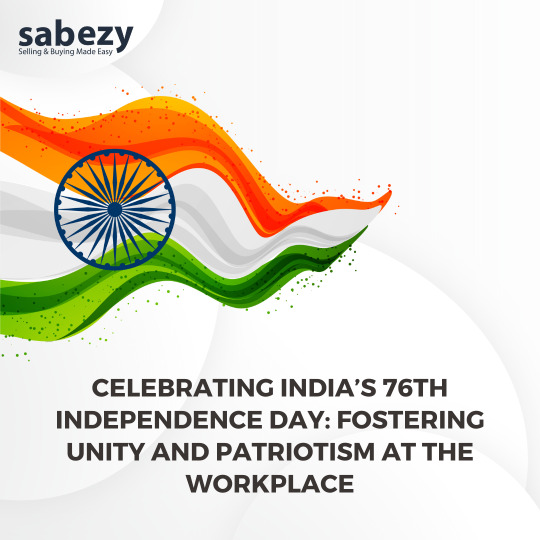
Celebrating India's 76th Independence Day: Fostering unity And Patriotism At Workplace | Sabezy
Celebrate India's 76th Independence Day in your workplace with creative ideas and activities. Develop patriotism and teamwork in your team. Happy Independence Day!
#happy independence day#76th independence day#Indian independence day greetings#independence day rangoli#independence day flag hoisting#office decoration#sabezy#tricolor flag#tricolor
0 notes
Text
DAY 5926
Jalsa, Mumbai May 9/10, 2024 Thu/Fri 12:22 AM
Birthday Greetings for May 10th , 2024
Saddened to hear the news of the passing away of Shri Ratan Lal Bhutoria , Father of our dear Ef Rohit Kumar Bhutoria .. Rohit's Father met with a road accident this morning and unfortunately could not survive .. as informed by Ef Sanjay Patodiya .. 😔🙏🏻 .. deeply shocked and grieved .. our very sincerest condolences to you , Rohit .. we hold your hand .. be strong .. the whole Ef Family with you .. in prayer and support .. 🙏🏻
..
Hard to put anything after this 💔 .. but the occasion for it's greatness I think it deserves a mention .. 🙏🏻
..
A bit of historic ”gyaan” today .. 🙏🏻
:
10 May In Indian History :
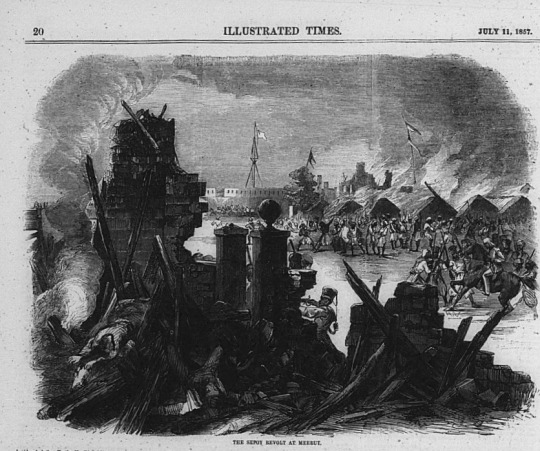
.. 10th May 1857 .. the great Indian rebellion .. the 1st war of independence against the British at Meerut .. the rebellion began in the form of a mutiny of sepoys of the East India Company's army in the garrison town of Meerut ..
Meerut is situated between the holy rivers Ganga and Yamuna ..
Thanks to its geographical importance, the fertile Ganga-Yamuna doab had been an important centre of human activities since the very early times of Vedic Civilisation.
From the medieval period onwards, the proximity of this city to Indraprastha (present day Delhi) helped it play an important role in the affairs of India.
With the capture of power by the British, Meerut became a major military centre. The aggrieved Indian soldiers of the British Army began their fight against the imperial powers in this soil on 10th May, 1857. They captured the control of the city in one day and marched to Red Fort in Delhi, which was considered to be the symbol of control over the whole of India. On their way, they were joined by the common people who shouted patriotic war cries. By the next morning, Red Fort had fallen into the hand of the freedom fighters.
..
Few pictures of India from 1857 ..
Lucknow .. 1857 ..
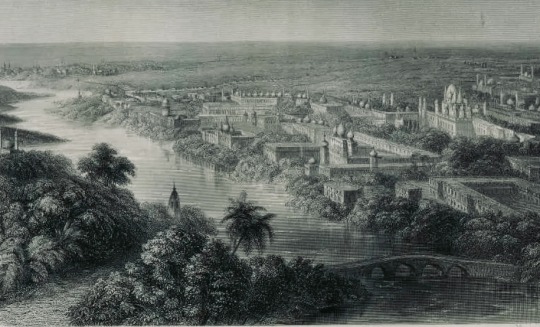
Calcutta .. 1853 ..

Taj Mahal .. Agra .. 1857 ..
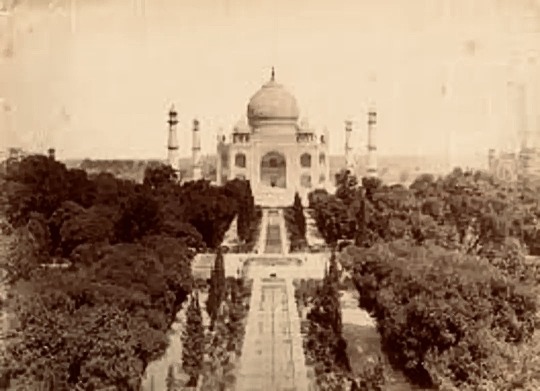
Jantar Mantar near Delhi .. 1858 ..
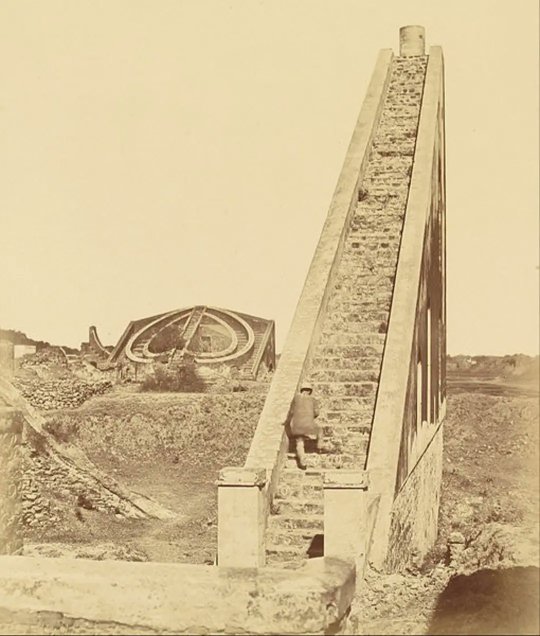
James Outram's Camp at Alumbagh, Lucknow .. It was occupied by Outram and his 4000 Soldiers After the 1857 Mutiny ..

Humayun's Tomb in Delhi .. 1858 ..
See how the change has taken place .. this is the same location where we shot the song from UUNCHAI, the film of Sooraj Barjatya, pictures of which had been put up here at the Blog
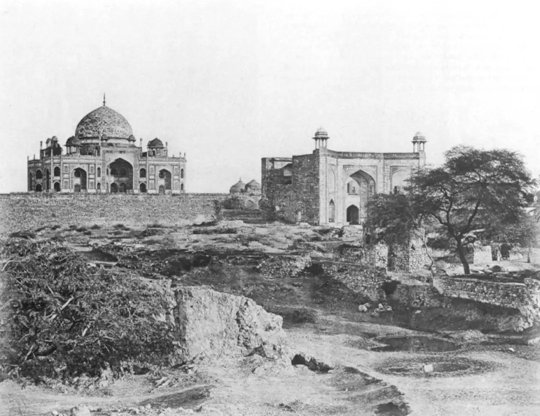
A Sikh cavalry .. Illustrated Times .. 1857 ..
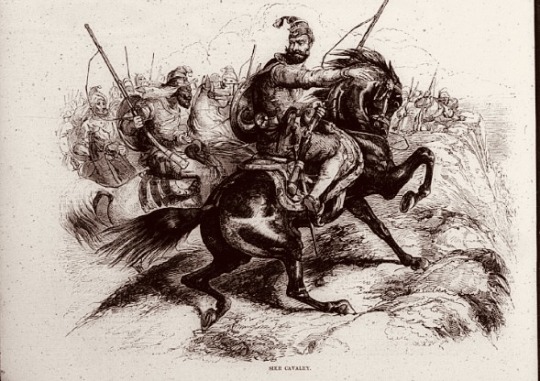
..
Jai Hind .. 🇮🇳🫡🕉️🙏🏻
Love .. ❤️🙏🏻
It has been a bit of a history lesson .. and after which it would be too severe to write anymore .. but simply to say , that the time at the Studio Saptaswar was visited after many an hour and days .. and the sonorous sounds for an upcoming film of Abhishek .. and of my own Section 84 , was I felt , in keeping with the moment and the story and the emotion ..
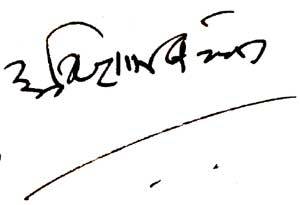
Amitabh Bachchan
100 notes
·
View notes
Text










THE WALES DIARIES ♚
20 APRIL 2023 || The Indian Streatery, Birmingham
The Prince and Princess of Wales travelled to Birmingham to meet future leaders in the arts and creative industries.
They started their day out by visiting the Indian Streateryan authentic, a family run independent Indian restaurantbased in thr Birmingham City Centre. The restaurant started out as a stall and is led by a female chef.
The Prince and Princess were chatting and exchanging jokes with staff as William was unexpectedly put to work and had to take a book from an unsuspecting customers Vinay and his wife Ankita who had "no idea" that it was William took their call.
William and Catherine donned on aprons and tried their hand out in making Indian street food and rolling rotis.
During the visit, they revealed that they love curries and "secretly" sample dishes all over the country. Catherine said their children "love" Indian food, adding that she herself is very partial to "spicy" food.
They took a group photo with the staff and following their visit spent time greeting the members of public outside.
#engagement diaries#engagement diaries 23#wales diaries 23#the wales diaries#british royal family#british royals#royalty#royals#brf#british royalty#kate middleton#catherine middleton#duchess of cambridge#royal#duke of cambridge#princess of wales#the princess of wales#princess catherine#catherine wales.#william wales.#the prince of wales#prince of wales#my gifs#gifs#prince and princess of wales#the prince and princess of wales#20.04.2023#birmingham visit apr 23#the indian streatery 23
76 notes
·
View notes
Text


Robert Cunninghame-Graham 1st President of National Party of Scotland and the first MP to call himself a socialist died 20th March 1936.
To me Robert Cunninghame-Graham is one of the most interesting of our 19th/20th century politicians.
please just like the post as a historical entity, and just dinnae........
Cunninghame Graham was an author, traveller explorer, politician and adventurer, he was a man of extraordinary talents, tireless energy and considerable courage. His friend and contemporary Joseph Conrad remarked, “When I think of Cunninghame Graham, I feel as though I have lived all my life in a dark hole without seeing or knowing anything.” and I have to agree with him, I use the term Polymath now and then for some subjects I post about, he was that, and more.
Born in London in 1852, educated at Harrow, but always, always, a Scot to his marrow, Cunninghame Graham was a descendant of the Earls of Menteith and the son of a laird whose lands eventually extended from Gartmore in Stirlingshire to Ardoch in Dunbartonshire and Finlaystone in Renfrewshire. It was there that Robert was largely brought up, coming heavily under the influence of his Spanish grandmother.
After schooling, at Harrow, Robert finished his education in Brussels, Belgium, learning, among other things, the art of swordsmanship at which he became an expert.
In a crowded life — Cunninghame Graham was variously a Member of Parliament, a gaucho in South America, a fencing master, a founder member of both the Independent Labour Party and the Scottish National Party, a rancher, horse-trainer, buffalo hunter and Long Rider through North and South America — he wrote prolifically. He called himself, "Don Roberto,". He also enjoyed a journey into Morocco, disguised as an Arab Sheik, he was, as they say, some man!
In 1872 Cunninghame Graham rode on horseback 600 miles up the river Parana to the Iguacu Falls, researching the role of the early Jesuits with the local Indians. His subsequent book, A Vanished Arcadia, was made into a film, The Mission starring Jeremy Irons. He lived for a time in Argentina, where his extended family had a ranch, by way of Uruguay and Paraguay. He became an expert horseman, riding with gauchos, and his admiration for these men was such that he often wore gaucho clothes when back home, he must have been quite a sight!
He wrote that one day on a knoll in the pampas he met a man who greeted him in halting Spanish. Cunninghame Graham suggested he speak in English and referred to the view. The man, said, perhaps hearing a Scots accent for the first time in 20 years, “Aye, but man, it’s naething tae the view off Dumyat.”
Don Roberto married to an equally colourful and talented woman that he met in Paris, Gabrielle de la Balmondiere, who had been described as a Chilean princess. In fact, she was an actress called Caroline Horsfall, who went on to be a published poet. Among her many admirers was WB Yeats.
His contact with poor people everywhere made him a socialist before that term was even coined. On returning from South America, he rapidly took up political campaigning and in 1886, there being no Labour Party, he stood on a radical ticket for the Liberals in North West Lanarkshire, winning comfortably.
On 12th September 1887 he was suspended from parliament for making what was called a "disrespectful reference" to the House of Lords. He was the first MP ever to be suspended from the House of Commons for swearing; the word was damn.
He was suspended from the House of Commons in December 1888 for protesting about the working conditions of chain makers. His response to the Speaker of the House, "I never withdraw", was later used by George Bernard Shaw in Arms and the Man.
He truly was a courageous man – in 1887, he was beaten up badly by police at the original Bloody Sunday in Trafalgar Square and was jailed for six weeks.
His leftward move and meetings with James Keir Hardie led him to co-found the Scottish Labour Party with Keir Hardie, but has been largely airbrushed out of the history of the party, due to his Scottish Nationalist views.
Its manifesto included nationalisation of land and minerals, an eight-hour day, State insurance, the abolition of the House of Lords and all hereditary offices, home rule for Scotland, the abolition of the liquor tariff and the disestablishment of State Churches.
Yet Labour disappointed him, don’t they always, and after World War One – he volunteered a the age of 62 and became a horse-buyer for the Army – his growing nationalism saw him become president of the National Party of Scotland, the forerunner of the SNP. On 23rd June, 1928, in the King’s Park, Stirling, he presided at its inaugural rally.
He was friends with everyone from Buffalo Bill Cody to George Bernard Shaw, had his portrait painted by Sir John Lavery, knew the Glasgow Boys cirlce of artists personally, was close friends with the writers Joseph Conrad and G.K Chesterton, and generally personified the word kenspeckle. A writer of over 30 books himself, there is a seat dedicated to Cunninghame Graham in the Scottish Storytelling Centre in Edinburgh with the inscription: "R B 'Don Roberto' Cunninghame Graham of Gartmore and Ardoch,
Few Scots actually know of yer man, but In Entre Rios, in the north east of Argentina is the Instituto Magnasco, in Gualeguaychu (pronounced Wally-wy-chew) there is a Cunninghame Graham library and museum! His books are available there to read on the premises, and the Smith’s library is based on that facility.
The Journalist and author, the late Rennie of the Stirling Smith Art Gallery and Museum wrote a booklet about Robert Cunninghame-Graham, called Braw Gallant, he wrote of the man : “He was a pioneer of socialism and Scottish nationalism, fought unemployment and poverty, backed the rights of native peoples against colonialism and short-sighted development, supported free speech, was an active conservationist, got caught up in the Irish question, attacked brutal wars when it was not fashionable to do so and was prepared to die or be imprisoned for his beliefs.
“The words knightly and chivalrous come to mind.”
Robert Cunninghame-Graham retired to Argentina, where he continued to be active, he would still ride daily while in his 80′s, he died on this day in 1936 of pneumonia at the Plaza Hotel in Retiro. Such was his standing he lay in state in the Casa del Teatro and received a countrywide tribute led by the President of the Republic of Argentina, before his body was shipped home to be buried beside his wife, in the ruined Augustinian Priory on the island of Inchmahome, Lake of Menteith, Stirlingshire. There is a memorial to him at at Castlehill, Dumbarton. The monument, which is built of Scottish stone, but also contains stones from Argentina, Uruguay and Paraguay.
Between these stones is a medallion of Cunninghame Graham (in his latter years) by the Liverpool born artist Alexander Proudfoot, RSA, who taught sculpture at Glasgow School of Art. Below the medallion is an epitaph which reads:
"Robert Bontine Cunninghame Graham 1852-1936 - Famous Author - Traveller and Horseman - Patriotic Scot and Citizen of the World - As Betokened by the Stones above. Died in Argentina, interred in Inchamahome - He Was a Master of Life - A King Among Men"
On the Argentinian stone, there is a portrait of his favourite horse Pampa, an Argentine mustang which he had rescued from pulling trams in Glasgow and rode for some 20 years and the inscription:
"To Pampa my black Argentine who I rode for twenty years without a fall. May the earth lie light upon him as lightly as he trod upon its face. Vale...or until so long. Don Roberto."
One of Pampa's hooves is buried beneath the monument.
The monument suffered considerable damage through vandalism during the 1970s and was moved in May 1981 to the village of Gartmore (where, until 1900, Gartmore House had been the principal seat of the Cunninghame Graham family), and was unveiled on Cunninghame Graham's birthday (24 May) by the Argentinian Ambassador. It is currently in the care of the National Trust for Scotland. Despite the removal of the monument to Gartmore, the Cunninghame Graham Memorial Park at Castlehill is affectionately known as "the Mony" and the original site of the Memorial marked by a stone.
In 2012 the National Trust for Scotland carried out significant conservation work on the monument which was completed in time for the 160th anniversary of Cunninghame Graham's birth. A new stone was added to commemorate another of Don Roberto's horses, Pingo, and a new information panel was placed nearby, as seen in the photos, the painting is Don Roberto on Pampas, and recently sold at Christies for over 31 thousand pounds.
The pics are my own from a visit to Kelvingrove Art Gallery last month.
Aye ah ken this post has gone on a wee bit more than my usual, I hope you have enjoyed reading it, but please, go have a look at this wee article about the man by Dominic Hilton, on The Critic web page, it is quite amusing. https://thecritic.co.uk/from-gaucho-to-rive-gauche-and.../
10 notes
·
View notes
Text
Bhagavad-Gita Classes / March to May 2024
Dear friends,
Greetings!
If you have five minutes to spare, I will tell you about my encounter with the Bhagavad-Gita.
I was nineteen when I first read the Gita, in English translation, from cover to cover.
I was quite impressed by it despite my near-complete ignorance of philosophy coupled with the disdainful scepticism that is natural to a college student. I got a chance to read through it again when my uncle Dr. Koti Sreekrishna prepared an independent English translation of the first few chapters. Little did I realize then that I would be co-translating the Gita some years down the road.
Our work, The New Bhagavad-Gita, was published in 2011. Since then, I've had the opportunity to go through the Gita multiple times, always hoping that the Gita will go through me at least once!
You might be wondering who I am.
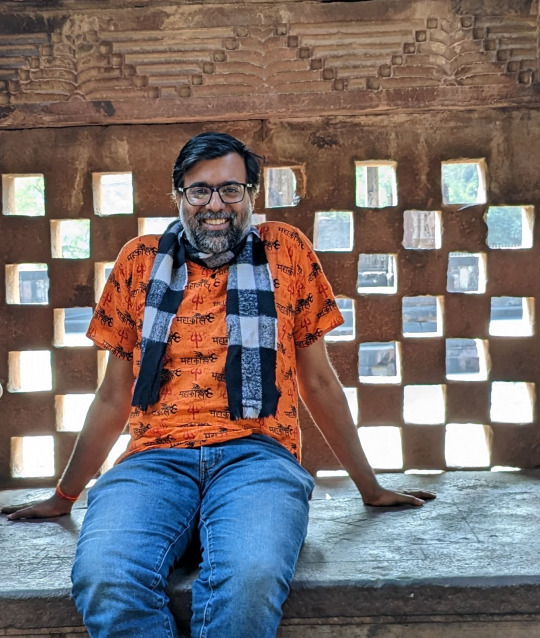
This is me: Hari Ravikumar.
I am an author/editor who has (co-)written/edited some forty books, primarily related to Indian culture and heritage.
Readers praised The New Bhagavad-Gita for its simple language and accessible content. I've always believed that any new knowledge should help make us a better person. And only if we understand the message can we even try to practice it!
#
Upon the request of a few friends, I will be teaching an online Bhagavad-Gita course in English, spanning March to May 2024, for anyone who is interested. Except for a working knowledge of English, no other pre-requisites are expected.
Starting on the auspicious day of Maha-shivaratri, the hour-long classes will be on zoom, five days a week (on week-days, at 6.30 am IST) with no homework. I will read out the Sanskrit shloka, give the meaning of the words, and explain the import of the verse. I will try to ensure that the basic concepts are clear to everyone.
In this manner, I will go through all seven hundred verses of the text.
What I am not going to do is enforce any views or beliefs; neither am I going to teach Sanskrit nor am I going to discuss technical details related to the Mahabharata. I will refrain from referring to any other treatise (such as Upanishads, Brahma-sutras, commentaries on the Gita, etc.)
I feel that whatever has been expounded in the Gita is meant to be experimented in our life and to be realized by experience rather than by blind faith or excessive intellectualisation.
By the end of the course, you will get an idea of what the Bhagavad-Gita contains—and perhaps seriously begin improving the quality of your life.
However, with this new learning, if you are expecting to win an election, find a girlfriend/boyfriend, get a promotion, or double your net worth, I'm afraid you'll be disappointed.
While teaching the class, I will be using the book The New Bhagavad-Gita (which you can get in the US on Amazon at this link and in India on Pothi at this link). It is not compulsory to buy the book but if you are one of those people who prefer having a book for ready reference, you may consider getting a copy.
If you are a serious student and have a great deal of extra time, you can get a copy of The Complete Bhagavad-Gita (available in three volumes: Vol. 1, Vol. 2, and Vol. 3) and study it.
I must warn you, this is going to be a really expensive course. It needs your undivided attention for 40+ hours in a span of three months.
In terms of money, however, it is free.
#
If you're interested to join the course or if you wish to know more, join this WhatsApp group.
4 notes
·
View notes
Text
Bollywood's Top 10: Where Cinema Meets Personal Celebration

Bollywood's cinematic landscape is as diverse as its audience, offering an array of films that charm, challenge, and captivate. From heart-wrenching dramas to high-octane action thrillers, the Indian film industry has mastered the art of storytelling. As we embrace the digital age, the connection between Bollywood stars and their fans has evolved, offering personalized experiences like video messages for birthdays from celebrities. Let’s journey through Bollywood's top 10 movies and explore how fans can bring a piece of these cinematic masterpieces into their personal celebrations.
1. "Dilwale Dulhania Le Jayenge" (DDLJ)
A timeless classic that redefined love for an entire generation. Imagine receiving a video message for a birthday from a celebrity like Shah Rukh Khan, echoing the charisma of Raj from DDLJ. Services that customize video from celebs make it possible to bring such dreamy scenarios to life.
2. "3 Idiots"
A film that taught us to chase our dreams with a blend of laughter and tears. A customized birthday wish from Aamir Khan, wishing you the courage to follow your heart, could be the perfect gift to inspire your loved ones.
3. "Lagaan"
This epic sports drama set in the colonial era showcases the triumph of the underdog. Obtaining a personalize video from celebrity Aamir Khan, embodying the spirit of Bhuvan, could ignite the fire of perseverance and hope in anyone's heart.
4. "Bajrangi Bhaijaan"
A heart-touching tale of love beyond borders. Salman Khan, as the lovable Pavan, could send a customized video message, brightening up the day of someone special with his virtue of unconditional love and bravery.
5. "Queen"
This empowering story of self-discovery and independence would resonate wonderfully through a birthday message from Kangana Ranaut, encouraging fans to find their own voice and celebrate their individuality.
6. "Zindagi Na Milegi Dobara" (ZNMD)
A cinematic journey about friendship and conquering fears. Imagine having Hrithik, Farhan, and Abhay sending customized birthday greetings, sharing a slice of their adventure and inspiring you to embrace life's journey.
7. "Swades"
A thought-provoking film that beautifully captures the essence of returning to one's roots. A personalized message from Shah Rukh Khan, emphasizing the importance of home and belonging, could be a heartwarming addition to any celebration.
8. "Dangal"
An inspiring story based on true events, celebrating the power of determination. Having Aamir Khan send a motivational greeting, tailored to encourage strength and resilience, can be a powerful birthday gift.
9. "PK"
A film that questions societal norms and beliefs with humor and sensitivity. A customized video from the insightful and curious character PK (played by Aamir Khan) could serve as a delightful and thought-provoking birthday surprise.
10. "Kabhi Khushi Kabhie Gham" (K3G)
An extravagant tale of family love and reunion. The idea of receiving a personalized video message from celebrities like Shah Rukh Khan or Kajol, echoing the warmth and affection of the Raichand family, can add a special touch to any birthday celebration.
In this digital era, the way fans interact with their beloved Bollywood stars has transformed, making the impossible seem possible. A video message for a birthday from a celebrity can bring a slice of cinematic magic into the real world, creating unforgettable moments. Services that customize video from celebs bridge the gap between the silver screen and personal joy, allowing fans to cherish a bespoke piece of their favorite films and stars on their special day, making it truly memorable.
0 notes
Text

Send from Sansgreet Android App. Sanskrit greetings app from team @livesanskrit .
It's the first Android app for sending @sanskrit greetings. Download app from https://livesanskrit.com/sansgreet
Nana Saheb Peshwa II
Nana Saheb Peshwa II (19 May 1824 – 24 September 1859), born as Dhondu Pant, was an Indian Peshwa of the Maratha empire, aristocrat and fighter, who led the rebellion in Kanpur (Kanpur) during the Indian Rebellion of 1857. As the adopted son of the exiled Maratha Peshwa Baji Rao II, Nana Saheb believed that he was entitled to a pension from the East India Company, but the underlying contractual issues are rather murky. The Company's refusal to continue the pension after his father's death, as well as what he perceived as high-handed policies, compelled him to revolt and seek independence from company rule in India. He forced the British garrison in Kanpur to surrender, then executed the survivors, gaining control of Kanpur for a few days. He later disappeared, after his forces were defeated by a British force that recaptured Kanpur. He went to the Nepal Hills in 1859, where he is thought to have died.
#sansgreet #sanskritgreetings #greetingsinsanskrit #sanskritquotes #sanskritthoughts #emergingsanskrit #sanskrittrends #trendsinsanskrit #livesanskrit #sanskritlanguage #sanskritlove #sanskritdailyquotes #sanskritdailythoughts #sanskrit #resanskrit #nanasahebpeshwa #nanasaheb #indianpeshwa #peshwa #maratha #marathaempire #kanpur #celebratingsanskrit #maharashtra #maharashtratourism #marathi #marathas #naimishaforest #nepal #bajirao
#greetingsinsanskrit#sanskritgreetings#sanskrittrends#trendsinsanskrit#livesanskrit#sanskrit#celebratingsanskrit#incredibleindia#indianarmy
0 notes
Text
Dear All, GREETINGS!
QUESTION?
How come all so-called Non-Muslims are attacking ISLAM day and night for reasons best known to them?
Some of these people are IGNORANT, and don't know anything about their own Religion or practice it either, but all of a sudden, they are experts on ISLAM. Please explain it to me, HOW?
THANKS!
I am a SENIOR CITIZEN by the Grace of Allah Subhanahu wa Ta'ala(God Almighty), I have started my 85th Happy Birthday on October 1, 2023, and hope and pray that many more will come, In shaa Allah!
All Praises are due to Allah Subhanahu wa Ta'ala (God Almighty), ALONE, Who made me what I am, and Who Gave me what I have. Al-Hamdo lillahi Rabb-il 'aalameen.
Attached herewith is an article, WHY BLAME CHRISTIANS, HINDUS AND JEWS FOR GENOCIDE, for your information, kind consideration and perusal.
Thanking you in anticipation and hoping to hear from again, soon,
Sincerely,
Your brother in Humanity at Large, from One Man (Adam) One Woman (Eve), whether you beleve it or not. By the way, some of them believe in Darwin's Theory, which, I, as a Muslim do not, because it is still a theory.
I am SORRY to say that all those people who believe in DARWIN may be from MONKEYS, but I am not. Thank God Almighty, Who made me a human being (Insan) and a Muslim. All Praises are due to God Almighty, ALONE!
______________ ______________________________________
WHY BLAME CHRISTIANS FOR CENTURY OLD GENOCIDE OF IRISH (CATHOLICS) BY THE BRITISH (PROTESTANTS), HINDUS FOR MORE THAN HUNDRED YEARS OF GENOCIDE OF MUSLIMS IN OCCUPIED INDIA, INCLUDING BUT NOT LIMITED TO KASHMIR AND TERRORISM OF MUSLIM IN INDIA, AND JEWS FOR GENOCIDE OF PALESTINIANS IN OCCUPIED HOLY LAND (PALESTINE} SINCE 1948, AND STILL CONTINUING BY THE KILLING OF INNOCENT CHILDREN, HELPLESS WOMEN, AND OLD PEOPLE, WHO CANNOT WALK ON THEIR OWN?
JUST THINK ABOUT IT, SERIOUSLY! GOD FORBID
August 2023:
About a month ago, a video emerged of an Indian teacher telling students to slap a 7-year-old classmate. The boy had gotten his multiplication tables wrong, but his real crime was being an Indian Muslim.
Since 1947, India used to be a secular democracy, but its current leader, Narendra Modi of the ruling Bharatiya Janata Party (BJP), advances a radically different vision. Modi wants India to become a Hindu nation, in which India’s religious minorities (about 20% of the population) are second-class citizens and Muslims especially (about 14% of Indians) are compelled to accept increasing majoritarian violence.
Indeed, stories of terrorizing Indian Muslims have become depressingly common in Modi’s India, with human rights groups documenting rising violence with each passing year. International groups, such as Freedom House and V-Dem, consider India only “partly free” and an “electoral autocracy” owing to the sharp decline of human and civil rights.
4th of July, 2023 - Happy Independence Day to all Americans. On this day, I aim not to spoil your festivities but only draw your attention to something serious which is happening in the world since a decade after 9/11. Islam is actually a peaceful religion but some countries in the West are hell-bent on associating it with violence and terrorism. We should attach peace with all three Abrahamic religions and that's where this email which I received today is important to read. Please go through it yourself and any references of Christianity here are only meant to serve as examples:
Individuals, not religions, carry out inhuman activities. PERIOD!.
Islam is a religion of peace, accepted and practiced by more than 1.25 billion people worldwide. It is the fastest-growing religion in the world, and if it was what some critics claim, why should the people from all walks of life from around the world keep embracing Islam?
Where is the sword now?
In Islam, a person has the right to defend himself, his family, his country or his neighbor(s), which justifies the resistance being offered by the people of Afghanistan, Bosnia, Chechnya, Iraq, Kashmir and Palestine, to attacks on their soils by the so-called liberators, who are actually the occupiers.
The Holy Qur’an clearly states that if a person saves one life, it’s as if he saved humanity, and if a person kills one human being, it’s as if he killed humanity.
What is happening in the enslaved Muslim countries is a natural reaction to occupation, bombings, killing and terrorizing of innocent civilians (children, old men and women), rapes, in addition to looting of resources, national antiques and artifacts, above all destruction of property by the occupiers.
Terror breeds terror.
We assure those who bash Islam that if there was no occupation in this world by foreign invaders, there would be no resistance – the so-called terror.
We would like those who criticize Islam to explain the following acts committed by the Christians on Jews, other Christians and Muslims alike, throughout history:
- Hundreds of thousands of Muslim men, women and children killed by the crusaders, who were Christians.
- Inquisition of Jews and Muslims from Spain by Queen Isabella, a Christian.
- Millions of people killed by the European and American Christians during the two world wars.
- Hundreds of thousands of Christians killed every year by the Irish Christians, including the British and the IRA, both Catholics and Protestants, during the past few centuries. Why are they not blamed to be “Christian Terrorists?”
Both of them believe in Jesus Christ, who told them to turn the other cheek, and both of them believe in the same Lord, Who commanded that “Thou shall not kill.” Period.
- Timothy McVeigh, who bombed the Murrah Federal Building in Oklahoma City, was a Catholic. Are all Catholics terrorists?
Last but not least, the bombings, killings, rapings and lynchings of both American Indians and black slaves (Afro-Americans) during the past 200 years in the United States.
What about them?
Will those filled with hate for Islam blame Christianity for the above inhuman acts by Christians in various parts of the world since its inception?
If not, then why are they blaming the religion of Islam for what is a natural reaction to occupation of Muslim countries by foreign invaders?
Most importantly, these folks should know that the three great Abrahamic religions – Judaism, Christianity and Islam – have one common basis, and that is one (1) God Almighty, ALONE!
“All men (and women) are created equal, and we all are one nation under Almighty God,” is a statement according to the Holy Qur’an and is very well elucidated in the U.S. Constitution.
Lastly, yet importantly, as brothers in humanity, we recommend those filled with hate get an education in the history of Islam and Muslims, before they dare to write nasty letters full of personal, ingrain hate and vendetta.
We would be pleased to provide anyone with free copies of the Holy Qur’an and Islamic literature in English, FREE OF COST INCLUDING SHIPPING AND PACKING CHARGES TO ANY PLACE IN THE WORLD, which would help them to understand the truth about Islam and Muslims and get rid of hate from their systems, God willing.
May God Almighty show you the light and guide you to the straight path to Islam, Amen.
______________ _______________________
WHY BLAME CHRISTIANS FOR CENTURY OLD GENOCIDE OF IRISH (CATHOLICS) BY THE BRITISH (PROTESTANTS), HINDUS FOR MORE THAN HUNDRED YEARS OF GENOCIDE OF MUSLIMS IN OCCUPIED INDIA, INCLUDING BUT NOT LIMITED TO KASHMIR AND TERRORISM OF MUSLIM IN INDIA, AND JEWS FOR GENOCIDE OF PALESTINIANS IN OCCUPIED HOLY LAND (PALESTINE} SINCE 1948, AND STILL CONTINUING BY THE KILLING OF INNOCENT CHILDREN, HELPLESS WOMEN, AND OLD PEOPLE, WHO CANNOT WALK ON THEIR OWN?
JUST THINK ABOUT IT, SERIOUSLY! GOD FORBID
August 2023:
About a month ago, a video emerged of an Indian teacher telling students to slap a 7-year-old classmate. The boy had gotten his multiplication tables wrong, but his real crime was being an Indian Muslim.
Since 1947, India used to be a secular democracy, but its current leader, Narendra Modi of the ruling Bharatiya Janata Party (BJP), advances a radically different vision. Modi wants India to become a Hindu nation, in which India’s religious minorities (about 20% of the population) are second-class citizens and Muslims especially (about 14% of Indians) are compelled to accept increasing majoritarian violence.
Indeed, stories of terrorizing Indian Muslims have become depressingly common in Modi’s India, with human rights groups documenting rising violence with each passing year. International groups, such as Freedom House and V-Dem, consider India only “partly free” and an “electoral autocracy” owing to the sharp decline of human and civil rights.
4th of July, 2023 - Happy Independence Day to all Americans. On this day, I aim not to spoil your festivities but only draw your attention to something serious which is happening in the world since a decade after 9/11. Islam is actually a peaceful religion but some countries in the West are hell-bent on associating it with violence and terrorism. We should attach peace with all three Abrahamic religions and that's where this email which I received today is important to read. Please go through it yourself and any references of Christianity here are only meant to serve as examples:
Individuals, not religions, carry out inhuman activities. PERIOD!.
Islam is a religion of peace, accepted and practiced by more than 1.25 billion people worldwide. It is the fastest-growing religion in the world, and if it was what some critics claim, why should the people from all walks of life from around the world keep embracing Islam?
Where is the sword now?
In Islam, a person has the right to defend himself, his family, his country or his neighbor(s), which justifies the resistance being offered by the people of Afghanistan, Bosnia, Chechnya, Iraq, Kashmir and Palestine, to attacks on their soils by the so-called liberators, who are actually the occupiers.
The Holy Qur’an clearly states that if a person saves one life, it’s as if he saved humanity, and if a person kills one human being, it’s as if he killed humanity.
What is happening in the enslaved Muslim countries is a natural reaction to occupation, bombings, killing and terrorizing of innocent civilians (children, old men and women), rapes, in addition to looting of resources, national antiques and artifacts, above all destruction of property by the occupiers.
Terror breeds terror.
We assure those who bash Islam that if there was no occupation in this world by foreign invaders, there would be no resistance – the so-called terror.
We would like those who criticize Islam to explain the following acts committed by the Christians on Jews, other Christians and Muslims alike, throughout history:
- Hundreds of thousands of Muslim men, women and children killed by the crusaders, who were Christians.
- Inquisition of Jews and Muslims from Spain by Queen Isabella, a Christian.
- Millions of people killed by the European and American Christians during the two world wars.
- Hundreds of thousands of Christians killed every year by the Irish Christians, including the British and the IRA, both Catholics and Protestants, during the past few centuries. Why are they not blamed to be “Christian Terrorists?”
Both of them believe in Jesus Christ, who told them to turn the other cheek, and both of them believe in the same Lord, Who commanded that “Thou shall not kill.” Period.
- Timothy McVeigh, who bombed the Murrah Federal Building in Oklahoma City, was a Catholic. Are all Catholics terrorists?
Last but not least, the bombings, killings, rapings and lynchings of both American Indians and black slaves (Afro-Americans) during the past 200 years in the United States.
What about them?
Will those filled with hate for Islam blame Christianity for the above inhuman acts by Christians in various parts of the world since its inception?
If not, then why are they blaming the religion of Islam for what is a natural reaction to occupation of Muslim countries by foreign invaders?
Most importantly, these folks should know that the three great Abrahamic religions – Judaism, Christianity and Islam – have one common basis, and that is one (1) God Almighty, ALONE!
“All men (and women) are created equal, and we all are one nation under Almighty God,” is a statement according to the Holy Qur’an and is very well elucidated in the U.S. Constitution.
Lastly, yet importantly, as brothers in humanity, we recommend those filled with hate get an education in the history of Islam and Muslims, before they dare to write nasty letters full of personal, ingrain hate and vendetta.
We would be pleased to provide anyone with free copies of the Holy Qur’an and Islamic literature in English, FREE OF COST, INCLUDING SHIPPING CHARGES TO ANY WHERE IN THE WORLD, which would help them to understand the truth about Islam and Muslims and get rid of hate from their systems, God willing.
May God Almighty show you the light and guide you to the straight path to Islam, Amen.
0 notes
Text

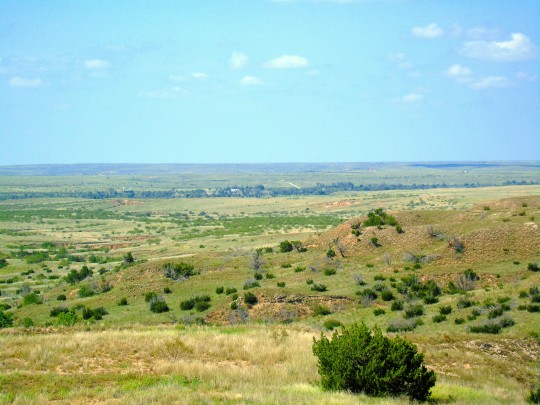

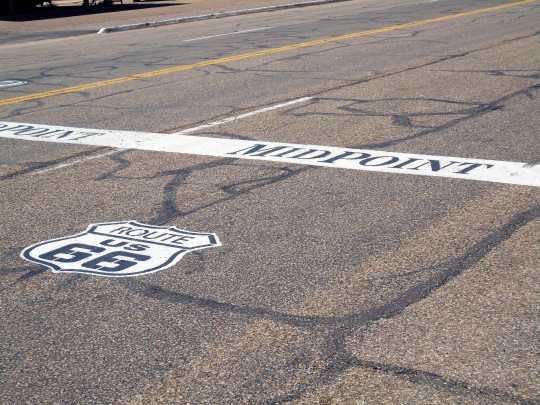

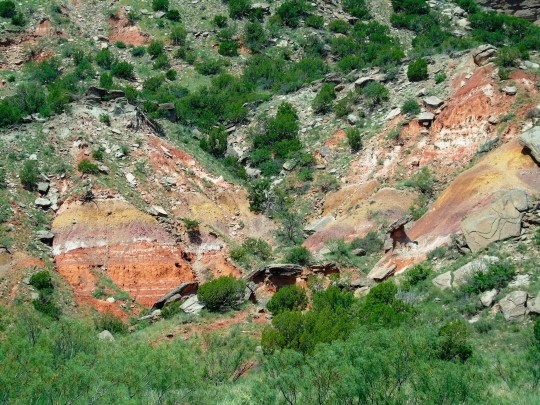


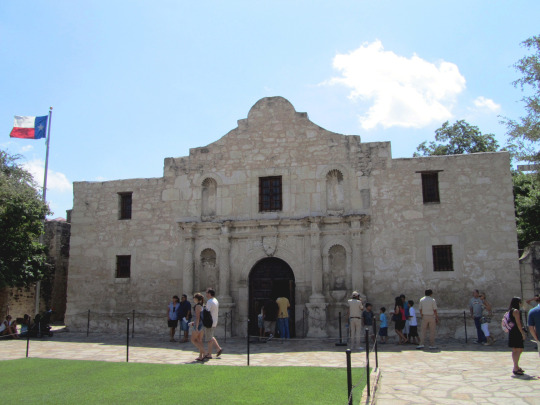
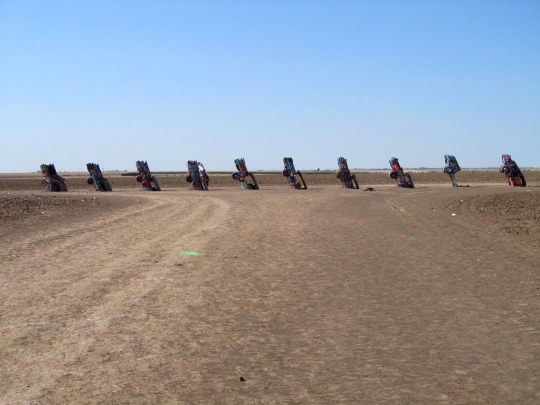
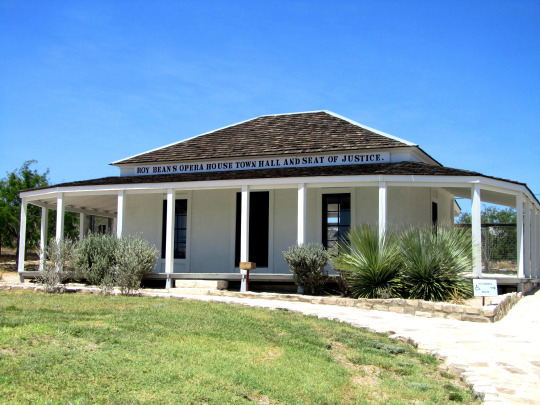

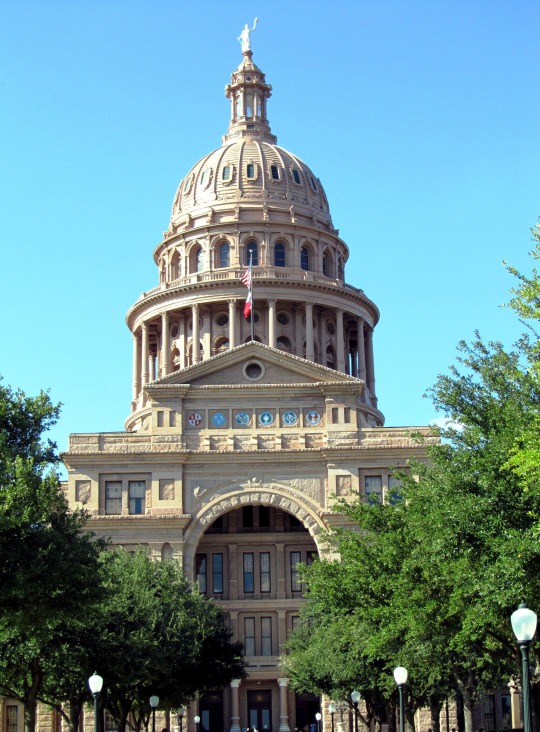
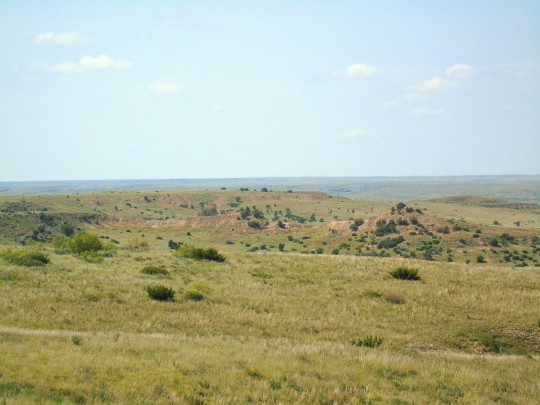

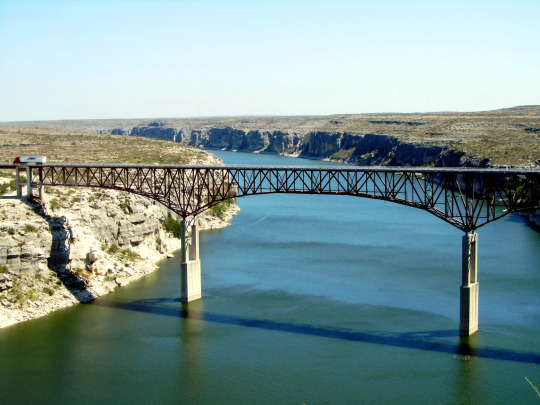

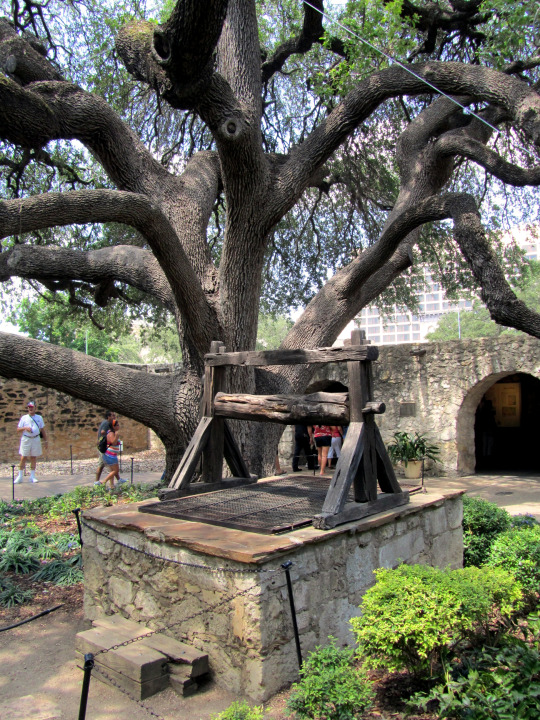

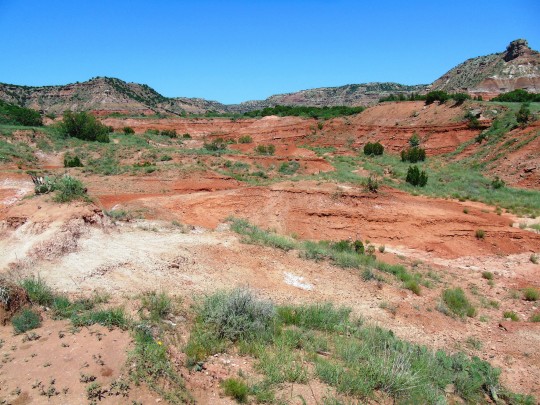


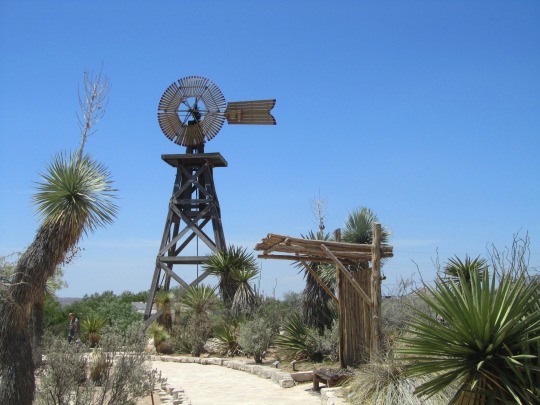



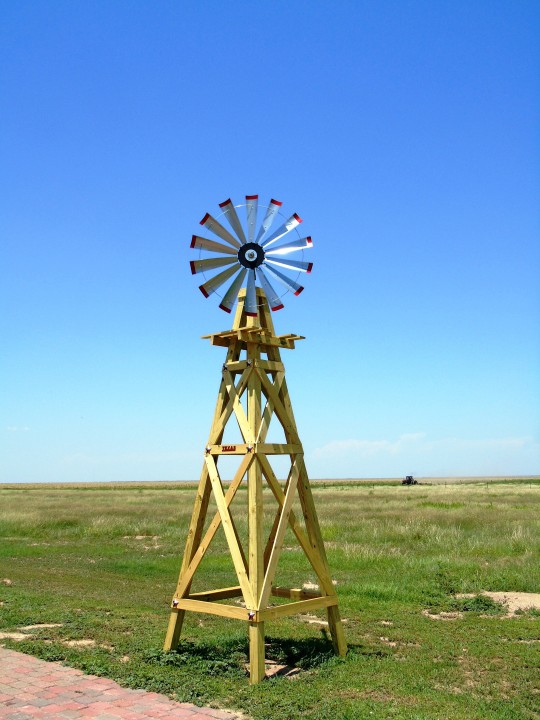

Texas Independence Day
Texas Independence Day on March 2 commemorates the signing of the Texas Declaration of Independence on the same date in 1836. Inhabitants of Texas proclaimed independence from Mexico and established the Republic of Texas with the signing of this declaration by over 59 delegates.
Children’s events, re-enactments, live band music, and cook-offs are all part of the festivities. Storytelling sessions about how Texas gained independence from Mexico and became a republic are among the other activities.
History of Texas Independence Day
A congress of Texians and Tejanos convened at Washington-on-the-Brazos during the Texas Revolution and declared Texas’ independence from Mexico, and they became known as Texans. The delegates elected David Burnet as interim president and confirmed Sam Houston as commander-in-chief of all Texas armies.
In addition, the Texans adopted a constitution that guaranteed the unrestricted practice of slavery, which had previously been banned by Mexican law. In the meantime, in San Antonio, the Alamo was still under siege by Mexican General Antonio de Santa Anna, and the fort’s defenders awaited the last Mexican attack.
Santa Anna ordered his troops to invade the Alamo on March 6. The first and second Mexican charges were defeated by Travis’ artillery, but the Texans were overpowered in less than an hour, and the Alamo was seized. All of the Texan and American defenders were murdered in fierce hand-to-hand combat when Santa Anna instructed that no prisoners should be taken. The Alamo’s only survivors were a small group of civilians, chiefly women and children. During the siege and storming of the Alamo, hundreds of Santa Anna’s soldiers died.
Six weeks later, at San Jacinto, a huge Texan army led by Houston surprised Santa Anna’s forces. The Texans overpowered the Mexicans and took Santa Anna. The dictator was forced to acknowledge Texas’ independence and withdraw his troops south of the Rio Grande. Nine years after the Texas Declaration of Independence was written, the Republic of Texas was annexed to the United States by the collective agreement of the United States Congress.
On December 29, 1845, the United States Congress officially recognized Texas as a member of the Union. Sam Houston Day and Texas Flag Day are also celebrated on March 2, albeit they are not legal holidays.
Texas Independence Day timeline
1835
The Texas Revolution Begins
The revolution begins on October 2 as a rebellion instigated by colonists from the U.S., supported by Tejanos, to oppose Mexico’s centralist government.
1836
The San Jacinto Battle
The Republic of Texas wins its independence on April 21 with victory at the San Jacinto River.
1845
Texas Joins the Union
On December 29, the United States Congress recognizes Texas as a constituent state.
1846
The Mexican-American War Begins
Mexico goes to war with the United States over the Republic of Texas’ annexation.
Texas Independence Day FAQs
How do Texans greet one another?
“Howdy,” the official Texas greeting, is much more than a witty remark voiced by Woody, the “Toy Story” cowboy. True Texans use the word as a popular greeting.
Can Texas leave the U.S. legally?
Texas v. White, a landmark Supreme Court ruling, says that states cannot leave the union by state legislation.
What is the slogan of Texas?
In February 1930, the Texas state motto of friendship was established. The slogan was probably chosen because Texas, or Tejas, was the Spanish translation of the native Indian tribe’s “thecas or teyshas”, which means “friends or allies.”
How to Celebrate Texas Independence Day
Attend a festival: Attend one of the festivals held on Texas Independence Day to celebrate. There are tons of activities for children and adults to have a fun time.
Participate in a reenactment: Join a reenactment of the famous events during the Texas Revolution. Play dress-up and reenact the battle of the Alamo with friends.
Learn more about Texas: Texas has a lot to offer. From excellent barbecues to live music, the Lone Star State has tons of attractions and rich history.
5 Facts About Texas That Will Blow Your Mind
Dr Pepper was made in Texas: Dr Pepper was first publicly introduced in 1904 and is now distributed all over the world; it was invented in 1885 by Charles Alderton in Waco, Texas.
First frozen margarita: Mariano Martinez, a Dallas restaurateur, invented the first frozen margarita machine.
Six flags: Texas’ Six Flags theme park is named after the six countries that have presided over Texas; Mexico, Spain, the U.S., France, the Confederate States of America, and the Republic of Texas.
Powers that be: Texas has an independent power grid, it is separated from the rest of the United States.
Nightcrawlers: Bracken Cave in Texas houses North America’s largest bat colony.
Why We Love Texas Independence Day
It’s a source of inspiration: The story of the Texas Revolution is the perfect example of snatching victory against the odds. The Texans made the impossible a reality when they defeated their Mexican rivals who far outnumbered them.
It’s a crucial page in the history books: The road to independence is a story that will be passed down for generations in Texas. The legendary battles and tales of bravery will be remembered for years to come.
Appreciating the war heroes: Texas Independence Day is an opportunity to honor the sacrifice of those who fought for Texas’ independence. Their names are not forgotten and their deeds remain fresh in the memories of their successors.
Source
#Texas Independence Day#Palo Duro Canyon State Park#2 March 1836#USA#Texas Declaration of Independence#anniversary#Texan history#US history#landscape#countryside#cityscape#architecture#summer 2014#2011#Adrian#Midpoint Route 66#Austin#the Alamo#Texas State Capitol#San Antonio#Cadillac Ranch#Amarillo#Corpus Christi#Gulf of Mexico#Pecos River High Bridge#Langtry#travel#original photography#vacation#tourist attraction
1 note
·
View note
Text
Event Calendar - Days to Celebrate in March 2024

March 2024 is full of festivals, holidays, and cultural events in India and around the world. Learn about the important days and dates in March 2024 and how to celebrate them with AdBanao App.
Celebrate March with AdBanao App
March is a month full of festivals, holidays, and cultural events in India. Whether you are looking for spiritual, social, or patriotic occasions, there is something for everyone in this month. In this blog post, we will highlight some of the major events that you can celebrate in March and how you can use AdBanao App to make them more memorable and fun.
Maha Shivaratri
Maha Shivaratri is a Hindu festival that celebrates the great night of Lord Shiva, the destroyer of evil and the transformer of life. It falls on the 8th of March this year and is observed by fasting, praying, and offering milk, water, and flowers to Shiva lingams. Maha Shivaratri is also a time to meditate, chant, and perform yoga to seek the blessings of Shiva for health, happiness, and prosperity.
With AdBanao App, you can create beautiful posters, videos, and stickers to share the message and significance of Maha Shivaratri with your friends and family. You can also get audio jingles and AI animation videos to add some music and creativity to your celebrations. AdBanao App has a variety of templates, designs, and fonts to suit your preferences and style.
Women’s Day
Women’s Day is a global event that celebrates the achievements and contributions of women in various fields and domains. It falls on the 8th of March every year and is a day to acknowledge, appreciate, and empower women across the world. Women’s Day is also a day to raise awareness and action for gender equality, women’s rights, and social justice.
With AdBanao App, you can create inspiring posters, videos, and stickers to honor the women in your life and express your gratitude and admiration for them. You can also get audio jingles and AI animation videos to celebrate the stories and successes of women who have made a difference in the world. AdBanao App has a range of templates, designs, and fonts to match your mood and message.
Shaheed Diwas
Shaheed Diwas, also known as Martyrs’ Day, is a day to pay tribute to the brave freedom fighters who sacrificed their lives for the country’s independence. It is observed on the 23rd of March every year to mark the anniversary of the execution of Bhagat Singh, Sukhdev Thapar, and Shivaram Rajguru by the British colonial rulers in 1931. Shaheed Diwas is a day to remember and salute the courage, patriotism, and vision of these revolutionaries who inspired millions of Indians to fight for their rights and dignity.
With AdBanao App, you can create patriotic posters, videos, and stickers to commemorate the legacy and spirit of Shaheed Diwas and share it with your fellow citizens. You can also get audio jingles and AI animation videos to spread the message and values of Shaheed Diwas and motivate others to follow their footsteps. AdBanao App has a variety of templates, designs, and fonts to reflect your pride and passion.
Holi
Holi is the most vibrant and colorful festival of India, celebrated on the full moon day of Phalguna month. It marks the end of winter and the arrival of spring, as well as the victory of good over evil and the love of Radha and Krishna. On this festive day, people play with colors, meet and greet one another, and enjoy delicious food and drinks. Holi is also a time to forgive and forget, and to spread joy and harmony.
#branding#adbanaoapp#marketing#postermaker#social media advertising#social media branding#festival#adbanao#digitalmarketing#marathi#qr code generator#adbanao app
0 notes
Text
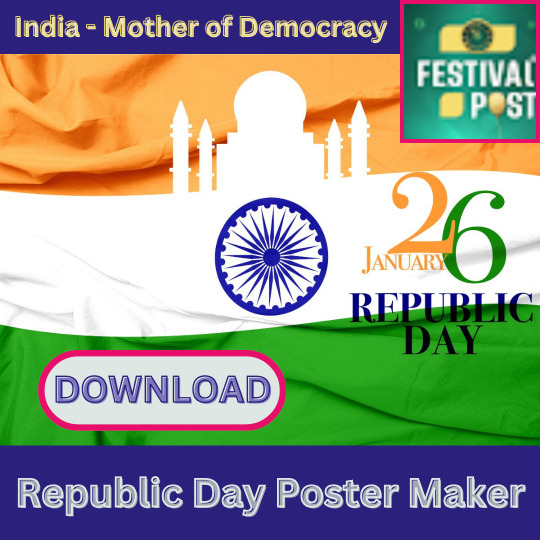
Find Best Republic Day Poster Maker Online
Wishing Happy Republic Day to ALL!!
ow to use Republic Day Poster Maker App:
1. Signup with your Mobile Number
2. Add details like Company Logo, Name, Mobile Number, and Website & Address
3. Select Category to make Poster
4. Choose Festival Frame or Video
5. Layout includes features like Add/Alter Text Color & Stylish Font
6. Save or Download Final Post in Gallery or at your file
7. Share your Happy Republic Day Poster & Video with Music.
We include all Indian celebrations, national and international days, Jayanti, Anniversary, Punyatithi, celebrity birthdays, and all religious holiday celebrations, special people and important days, political leaders' post-incident posts, popular posts, famous personality birthday posts, and more.
Republic Day Poster festival post is one of the most effective brand advancement apps, so only apps are going to be here to create your corporate identity all over the globe with just a click. You just need to register your number,Company Logo, Name, Mobile Number, and Website & Address, Select Category to make Poster, Choose Festival Frame or Video, Share your Happy Republic Day Poster & Video with Music Excellent!! And you are at the correct location.
26 January Photo Editor is a helpful app that allows you to personalise the images you upload. Save those memorable memories on January 26th with the Republic Day Photo Frames. In this application, we have included Republic Day frames for your creativity.
By Making26 January Poster Maker Let us cheer as we embrace the freedom of living independently in our nation in a pleasant, valuable, and respectful way by honouring our National Heroes, Mahatma Gandhi, Jawaharlal Nehru, Rani Lakshmi Bai, Bhagat Singh, Sardar Vallabhbhai Patel, Bal Gangadhar Tilak, Subhas Chandra Bose, Mangal Pandey, Chandra Shekhar Azad and who granted us freedom after enduring pain and losing their own lives for us.

Our Krantikari constitutes a reminder of the efforts made by our freedom warriors, as well as the duty we have to defend the values of democracy for which they struggled. As we celebrate this day, we focus on our country's achievement and the difficulties that exist beyond.
Republic Day Festival Post Maker is a very easy and simple poster maker app that help individuals, entrepreneurs, and business in conniving Festival Poster, Ads Banners, Digital Post, Daily Post, Marketing Post, Festival Graphic Design, Business Branding Post, Business Marketing Content, Festival Images, Festive Card, Digital post, Social Media marketing Post, Festival Design, Digital Card, Festival Photo Frame, Ads Banner, New Service Introduction, Political Election Publicity, Greeting, graphics, and more.
Our goal is to provide excellent graphic design posters & Banners that are easy and convenient to use. No poster-designing abilities are necessary. Our app's major feature is free post creating, as well as automatic posting to social networks such as Facebook, Instagram, Twitter, and LinkedIn.
You can rapidly build a festival banner by picking a templates design, colour scheme, background, Themes, layouts, text, and more. Festival Poster Maker app & Poster frames is free to use; simply download it from the Play Store, sign in, and start using it. A unique and faultless promotional poster is a wonderful way to disseminate news, create enthusiasm, and reach audience members to events. Use our post creator app to quickly make a festival poster.
Download this app today and celebrate Republic Day (January 26) with an HD quality photo poster.
Happy Republic Day to all Indians. Proud to be Indian...Jai Hind!
0 notes
Text
Indian Republic Day: A Celebration of Democracy and Constitution
Every year on January 26th, Indians around the globe celebrate the Indian Republic Day, marking a significant milestone in India's journey as a democratic republic. This day honors the date in 1950 when the Constitution of India came into effect, transforming India into a democratic republic two years after gaining independence from British rule.
Historical Perspective
The significance of Republic Day stems from the adoption and enforcement of the Constitution of India. It replaced the Government of India Act (1935) as the governing document of the country, paving the way for a newly formed republic.
The formation of the Constitution was an arduous process, requiring almost three years of continuous work. Led by Dr. B.R Ambedkar, referred to as the architect of the Indian Constitution, the drafting committee constructed a robust Constitution that aimed to provide all Indian citizens with justice, equality, and liberty. The Constitution, while embodying the essence of Indian values, also drew inspiration and ideas from other country's constitutions, highlighting its inclusivity and far-sighted vision.
Celebrations Galore
India celebrates Republic Day with great enthusiasm and grandeur. The main event unfolds in the capital, New Delhi, at Rajpath. The event commences with the President of India, the Commander-in-chief of the Indian Armed Forces, hoisting the national flag, followed by a vibrant parade showcasing the diverse cultural heritage of India and the strength of its military.
This parade is a colorful amalgamation of performances by school children, folk dancers, and state contingents who portray the rich cultural, historical, and social narrative of the country. The Indian Air Force's thrilling flypast is one of the most anticipated events of the celebration, filling the spectators with awe and pride.
Republic Day also witnesses the presence of a foreign chief guest, reflecting India's diplomatic relationships and its role in the global community.
As Republic Day approaches, the air fills with patriotic fervor. People exchange greetings and good wishes to express their joy and pride towards the nation. A popular tradition is the exchange of "Republic day wishes in Hindi" among the masses. A common wish would be, "गणतंत्र दिवस की हार्दिक शुभकामनाएं" meaning "heartfelt wishes for Republic Day".
As we celebrate Republic Day, it's important to remember the countless sacrifices that made this day possible. It's a day to reflect on our progress as a nation and recommit ourselves to uphold the principles enshrined in our Constitution— justice, equality, liberty, and fraternity. Happy Republic Day to all!
0 notes
Text
National Army Day

Honoring Courage and Sacrifice Every year on January 15, India proudly celebrates Armed Forces Day, a landmark event that commemorates the establishment of the Indian Army in 1949. The day holds great significance as it pays tribute to the dedication, courage and unwavering sacrifice of the soldiers.
The Indian Army, renowned for its professionalism and dedication, plays a vital role in the security and integrity of the nation. Military Day is a reminder of the sacrifices made by soldiers, standing tall in the face of adversity in missions of war or peace. It is a day to celebrate the spirit and unbridled courage of the men and women in uniform who serve selflessly of the glorious national defense.
The history behind Army Day began in 1949 when Lt. Gen. K.M. Carriappa took charge as the Indian Commander in Chief of the Indian Army. The formal transfer of power took place on January 15, out of which the Independent Indian Army was born.
Since then, Armed Forces Day has been celebrated annually to celebrate the professionalism, dedication and sacrifice of the military. Rallies and ceremonies are held across the country on this day.
The most important event is the Military Parade at the Carriappa Parade Ground in New Delhi. The parade showcases the skills of the Indian Army, the President of India, who is also the Chief of Army Staff, greets during the parade. Armed Forces Day is not just a celebration; It is time for the entire nation to express its gratitude to the brave men and women serving in the Indian Army.
Are you Dreaming of Becoming an IPS or IAS Officer ? Call us Now and Book a Consult with us : +91 8089166792
iLearn IAS one of the Best Civil Service Institute in Trivandrum
0 notes
Text
Celebrating Festivals and Traditions in Delhi Preschools.
Delhi is a vibrant city with a wide range of cultures, customs, and holidays. Whether you're looking for play schools in Delhi, play schools nearby, or preschools in India, Delhi's preschools are aware of the unique set of traditions that influence its citizens' way of life. They view the celebration of holidays and customs as a crucial component of early education. Let's look at how these events in Delhi improve the preschool experience.

1. Exposure to many cultures
Delhi's preschools celebrate the city's culture. A wide variety of cultures, languages, and traditions are introduced to children. Their views are expanded, and cultural awareness increases when they participate in festivals from various regions of India and the world.
2. Diwali, the Festival of Lights
Diwali, one of the most prominent festivals in Delhi, is celebrated with great enthusiasm. Preschools engage children in activities like making diyas (clay lamps), creating rangoli (decorative patterns), and learning about the significance of the festival.
3. Holi, the Festival of Colors
Holi, a festival known for its vibrant colors and joyful atmosphere, is a favorite among preschoolers. Children partake in safe and eco-friendly color play and enjoy traditional sweets.
4. Eid al-Fitr
Preschools in Delhi mark Eid al-Fitr with a focus on understanding the significance of the festival, traditional attire, and delicious festive treats. It's an opportunity to learn about diversity and inclusivity.
5. Christmas Celebrations
Christmas is celebrated with the spirit of giving and sharing. Children engage in decorating Christmas trees, making greeting cards, and learning about the story of Christmas.
6. Dussehra and Durga Puja
The significance of Dussehra and Durga Puja is explained to children through storytelling and art. They create effigies of Ravana and participate in mock Ramayana enactments.
7. Independence Day
Independence Day is a time for children to learn about the history of India's freedom struggle. They participate in flag-hoisting ceremonies and patriotic songs.
8. Gurpurab
Preschools celebrate Gurpurab, the birth anniversary of Guru Nanak, with storytelling, hymns, and learning about the teachings of Guru Nanak.
9. Lohri
Lohri, a Punjabi festival, is celebrated with bonfires, folk songs, and traditional foods like sesame seeds and jaggery. Children learn about regional traditions and folklore.
10. Parental Involvement through the Parent App
To keep parents informed and engaged in these celebrations, many preschools offer a parent app. This technology allows parents to stay updated on the school's cultural activities and access resources to continue the festivities at home.
11. Cultural Dress Days
Preschools often have cultural dress days where children come dressed in traditional attire from various Indian states. It's a fun and educational way to learn about India's diverse heritage
12. Storytelling and Folktales
Traditional stories and folktales from different cultures are shared with children. These tales provide insights into cultural values, heroes, and legends.
Here is the listing of top Preschool in Dwarka, Preschool in Greater Noida.
In conclusion, celebrating festivals and traditions in Delhi's preschools is not just about fun and festivities; it's a means of imparting cultural education and promoting inclusivity. Whether you're seeking play schools in Delhi, Search “play schools near me”, or preschools in India, consider the significance of cultural celebrations when choosing the right preschool for your child. These experiences help them develop an appreciation for diversity, a sense of belonging, and a deeper understanding of the world around them.
Originally Published Here.
0 notes
Text
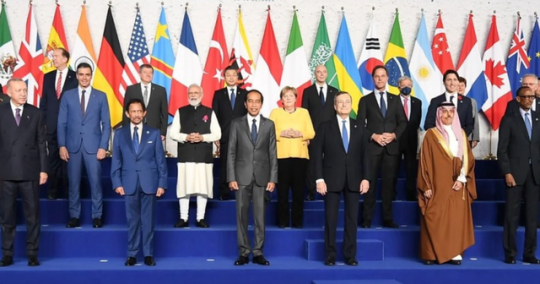
Prime Minister Narendra Modi on Sunday evening visited the International Media Centre at the Bharat Mandapam, the venue of the G20 Summit.
After holding a series of bilateral meetings with world leaders following the conclusion of the summit, Modi came to the media centre and greeted those present there.
He waved at journalists, both from India and abroad, as camerapersons vied to click him.
Amid cheers, Modi walked in the cavernous hall on the ground floor of the International Media Centre (IMC) which was all decked up.
G20 logos were splashed across huge decorative panels put up in the hall on the theme ‘Vasudhaiva Kutumbakam’ — ‘One Earth. One Family. One Future’.
Leaders of the world’s 20 big economies ended a summit in the Indian capital on Sunday overcoming deep divisions over the war in Ukraine to produce a consensus document and move forward on issues such overhauling institutions like the World Bank.
They also formally admitted the African Union to the bloc to make the grouping more representative.
SHOW MORE
01.01.51 AM IST, 11 September 2023
G20 Summit: Key outcomes
Green Development Pact: The declaration “envisages a green development pact for a sustainable future, it endorses high-level principles on lifestyle for sustainable development, voluntary principles of hydrogen, the Chennai principles for a sustainable resilient blue economy and the Deccan principles on food security and nutrition among others…”
Action Plan on Sustainable Development Goals: The New Delhi Declaration focuses on promoting strong sustainable, balanced and inclusive growth and seeks to accelerate progress on SDGs.
High-level principles on anti-corruption: The world leaders reaffirmed the commitment to zero tolerance for corruption.
Support for Digital Public Infrastructure: The G20 leaders agreed on strong emphasis on technology, linked to digital public infrastructure during the G20 India’s presidency.
Multilateral Development Banks: In the G20 declaration adopted on the first day of the G20 summit, the member countries endorsed the G20 Roadmap for Implementing the Recommendations of the G20 Independent Review of MDBs Capital Adequacy Frameworks and called for its ambitious implementation, within MDBs’ own governance frameworks while safeguarding their long-term financial sustainability, robust credit ratings and preferred creditor status.
African Union’s inclusion: In his opening remarks at the 18th G20 Leaders’ Summit on Saturday, PM Modi invited the African Union, represented by Assoumani, to take a seat at the table of G20 leaders as a permanent member.
10.56.27 PM IST, 10 September 2023
0 notes
Text
Best Historical Places in Delhi
Best Historical Places in Delhi
Red Fort
The Red Fort is a significant historical site in Delhi. It was made by Shahjahan using colourful red stone. Mughal rulers lived here for about 200 years. Every year on Independence Day, the Prime Minister raises the Indian flag and speaks to the country from the main gate. Inside the fort, there's a museum, garden, royal rooms, and a public hall that tell stories from the past.
Location: Netaji Subhash Road, Chandni Chowk.
Timings: Everyday from 9.30 am – 4.30pm. except Monday.
Entry fees: Rs. 35/- for Indian, Rs. 500/- for foreigners.
Humayun’s Tomb
This stunning building is one of the well-kept Mughal monuments. It was constructed by Hamida Banu in 1572 to honour her husband, Emperor Humayun. The design mixes Persian and Indian styles, and it has gardens with water and pathways like paradise gardens in the Quran. The building has two levels, made from red stone, while the tomb uses yellow and black marble.
Location: Mathura Road, opposite Dargah Nizamuddin.
Timings: Sunrise to sunset all days.
Entry fees: Indian visitors- Rs.30/-, Foreigners visitors- Rs.500/-
Qutub Minar
India's tallest tower, Qutub Minar, is a UNESCO world heritage site made from vibrant red sandstone and marble.
This tower is surrounded by other important ancient and medieval buildings from the Mughal times. The tower itself is 73 meters tall, with five stories and a spiral staircase of 379 steps that lead to the top. Delhi holds many historical sites.
Location: Mehrauli near Chhatarpur temple complex, Qutub Minar and Saket are the nearest metro station.
Timings: 7.00am – 5.00pm all days.
Entry fees: Indian visitors- Rs.30/-, Foreigners visitors- Rs.500/-
Chhota Qutub Minar
The minuscule village, Hast-sthal literally meaning the land of elephants has a hidden gem, namely the Chota Qutub Minar. This 17th century 5 storied Minaret commissioned by the Mughal emperor Shahjahan is now amidst dense residential locality, bustling bazaar, residential annexes and busy roads leading you to this historical Place in Delhi.
Once a regal grandeur in red sandstones and bricks adorned with white marble is now in an obscure state. The emperor used this as his royal hunting lodge post his quest for the wild in the surrounding dense forest area.
Location: Hastsal Village, Uttam Nagar, West Delhi
Timings: All the time.
Entry fees: Free
India Gate
India Gate is a war memorial on Janpath built in the memory of the 70,000 soldiers of the British Indian Army who laid their lives in World War 1. A structure in black marble plinth with a reversed rifle capped by a war helmet bounded by four eternal flames beneath the towering Memorial archway is the Amar Jawan Jyoti. It is the best place to enjoy with friends in Delhi and to click some good pictures.
The flame of the immortal warrior has been burning since 1971 and is customary for the President or the Prime Minister to pay homage at the shrine on every state ceremony. Weekends attract a lot of locals and tourists as they find an opportunity of indulging in quite a large list of things to do in delhi. India Gate nowadays is the favourite hangout place for Delhiites!
Location: Near Rajpath
Timings: All the time.
Entry fees: Free.
Hauz Khas Fort
Hauz Khas Fort was built by Alauddin Khilji in 1284 to provide unlimited water supply to Siri Fort. A vast reservoir greets you at the entry leading you to the deer park which is lush green and serene taking your senses to a tranquil state.
The light and sound show in the evening further beautifies the glory of the Fort and attracts tourists in manifolds. Other than the Fort, the Hauz Khas complex comprises of the Islamic seminary, Water tank, Mosque and a tomb. If you don't want to miss amazing tourist attractions on your trip then you should definitely book Delhi Tour packages.
Location: Hauz Khas village, Deer Park.
Timings: 10.30am – 7.00pm except Sundays.
Entry fees: Free.
Jama Masjid
One of the largest Mosque of India, Jama Masjid is also known as the Masjid-I Jahan-Numa was built by the Mughal emperor Shahjahan in 1656 at a cost of around 1 million rupees.
Built with slits of red sandstone and marble, this monument has 3 majestic gates, 4 towers and 2 minarets. The Mosque faces the holy city of Mecca, while the colossal courtyard can accommodate 25,000 worshippers offering prayers at any given point in time.
Location: Off Netaji Subhash Marg, Near Red Fort.
Timings: 7.00am to noon and 1.30pm – 7.30pm (tourists are not allowed during prayer time)
Entry fees: Free.
Rashtra Pati Bhawan
The official residence of the President of India on Rajpath is an iconic monument which is visited by every tourist travelling to India. This 320-acre property has a mansion with 340 rooms, Mughal gardens, residences of staff and stables.
The largest residence of any head of a country in the world is counted as one of the historical Places in Delhi which was built by the British Architect Sir Edwin Lutyens for the Viceroy’. The ceremonial grandeur of this monument has inspired many architects worldwide.
Location: Rajpath near Gate no. 2.
Timings: 9.00am – 4.00pm, Thursday to Sunday.
Entry fees: Rs.50/- per visitor.
Tughlaq bad Fort
This colossal stone Fort complex was built by Ghia’s-Ud-din Tughlaq in 1321 AD. The 15-metre high sloping barricading walls have battlement parapets and bastions offering an advantage over the enemy.
The 13 spectacular gates, the intriguing secret underground passage, royal mausoleum, grand halls and magnificent residences will reminisce one of the royal warriors who lived life with dignity and grandeur and fought with equal might and valour to protect their majesty.
Location: Mehrauli- Badarpur road.
Timings: 7.00am to 5.00pm all days.
Entry fees: RS.5/- for Indians and Rs.100/- for foreigners.
Jantar Mantar
This observatory is a historical monument in Delhi which is not only of interest to children, but adults too are intrigued by the ancient astronomical instruments built by Maharaja Jai Singh of Jaipur. You should visit Jantar Mantar during winters as it is the best time to visit Delhi and to explore great monuments and landmarks.
This heritage site was built in 1724 using brick, limestone and plaster to help understand and improve the study of time and space. Out of the 13 astronomical instruments, the Ram Yantra, Jayprakash Yantra, Samrat Yantra and Misra yantra are the crowd pullers.
Location: Parliament Street, Connaught place
Timings: sunrise to sunset, all days.
Entry fees: Rs.5/- for Indians and Rs.100/- for foreigners.
Akshardham Temple
Inspired by Yogi Ji Maharaj and created by Pramukh Swami Maharaj, the Swaminarayan Akshardham temple display an array of the spiritual and cultural aspect of Hinduism. The 10 gates denote the ten-principal direction as per Indian mythology.
The complex features three exhibitions, namely the Sahajanand Darshan, Neelkanth Darshan and Sanskruti Darshan along with Sahaj Anand water show, Abhisheka Mandap and a theme garden. The Mandovar houses 4287 carved stones and has 48 idols of Ganesh and 200 sculpted figures of Rishi, Muni, Sadhu and devotees. Explore this enigmatic site and create a lifetime of memories. You can also explore amazing places to visit near Delhi within 100 kms as Delhi attracts a lot of tourists for its vibrant beauty and culture.
Location: Akshardham Setu on NH 24.
Timings: 9.30am – 6.30pm except for Mondays.
Entry fees: Rs. 170/-
Lotus Temple
The Bahai House of Worship is a simple and serene structure in white marble resembling a flower. The building consists of 27 marble clad petal shaped structure at 3 levels with 9 sides.
The 9 doors lead to the central hall which can accommodate 2500 people from any religious background to worship or meditate in peace. The pristine white interior adds on to pure and tranquil existence. The Lotus Temples has claimed several accolades for its architecture wonder and as the most visited building in the world.
Location: Nehru place near Kalkaji temple.
Timings: 9.00am – 5.30pm, except Mondays.
Entry fees: Free.
Lodhi Gardens
Lodhi gardens is a city park settled over 90 acres, built by the Lodi’s in the 15th-century houses the tombs of several Mughal rulers. The Bara Gumbad and the Sheesh Gumbad narrates the architectural glory of an archaic era.
Morning walkers, yoga enthusiasts and joggers from different parts of Delhi flock this place in numbers to soak in the lush greenery around and make it colourful and lively as the day breaks. Lodhi gardens is one of the best picnic spots to spend time with your loved ones.
Location: Lodhi road, beside India International Centre.
Timings: 6.00am to 8.00pm daily.
Entry fees: Free.
Agrasen ki Baoli
Built in the 14th century by the King Agrasen, the 60 feet deep step well has been very carefully maintained by the Archaeological Survey of India. This historical Place in Delhi has 108 steps with three levels leading to the water storage area.
The austere grandeur of this step well has allured many architects and historians worldwide. It is definitely one of the best places to hangout for youngsters in Delhi. It is an amazing experience to walk through the cascading stairs and to realise that it was all excavated with hand several decades back.
Location: Hailey Road, Near KG Marg, Connaught Place.
Timings: 7.00am to 6.30pm all days.
Entry fees: Free.
Purana Quila
The oldest Fort in India, the Purana Quila is one of the most captivating historical places in Delhi due to its towering presence. Built by Humayun in 1534 currently, it has a light and sound show narrating the history of the Citadel.
The massive ramparts adorned with merlons have three gateways. The old Fort is surrounded by a wide moat connecting to river Yamuna where visitors are seen boating on relaxed weekends.
Location: Mathura Road near Delhi Zoo.
Timings: 7.00am to 5.00pm all days.
Entry fees: Rs. 20/- for Indians and Rs.200/- for foreigners.
Mehrauli Archaeological Park
One of the most well-preserved historical relics in Delhi bordering the Qutub Minar complex is worth a visit. This archaeological site, though ignored by the tourists has the Jamali-Kamali Mosque done up in grand Mughal style.
The walking track leads one to the garden where often children of different ages are seen playing around. The tomb of Mohammed Quli Khan is exquisitely embellished with painted plasterwork with occasional glazed tiles.
Location: Mehrauli Gurgaon road, near Lado Sarai.
Timings: 8.00am to 6.30pm all days.
Entry fees: Free.
Jahanpanah Fort
Jahanpanah is a barricaded city built by Muhammad Bin Tughlaq to encounter the Mongols. Though the Fort lies in a dilapidated condition, yet it has several structures which offer hindsight of the dynasty.
As the imperial family stayed at the royal residences, the Begumpur Mosque was built for the Royals to offer prayers and the Sarai Shahji Mahal was used as an inn. Other monuments like the Bijai Mandal, Kalusarai Mosque, Kharbuje ka Gumbad and Lal Gumbad bedeck the complex.
Location: Malviya Nagar.
Timings: 9.00am to 6.30pm all days.
Entry fees: Free.
Safdarjung Tomb
Built by Shuja-Ud-Daula in 1754 in Mughal architectural style, this historical Place in Delhi has garnered attention by tourists. The mausoleum built of marble and sandstone with grand arches, intricate detailing and majestic architecture has stood testimony to time.
Also known as, “Safdarjung Ka Maqbara” has a garden, a library and several pavilions adding on the grandiose. The immaculate garden surrounding the tomb is built in Charbagh style with walkways and sparkling water tank.
Location: Intersection of Safdarjung road and Aurobindo Marg.
Timings: Sunrise to sunset daily.
Entry fees: Rs15/- for Indians and Rs.200/- for foreigners.
Nizamuddin
Nizamuddin is a popular busy and crowded location in Delhi bustling with markets, Bazaar and residences. This site has a few hidden gems of historic relevance like the Humayun’s Tomb and Abdul Rahim Khan I Khana.
Hands of skilful Mughal architects built this grand double domed Mausoleum of Humayun which stands tall till date. The Sufi shrine of Nizamuddin Dargah churns out devotional Sufi songs to heal the distressed body and mind. Nizamuddin emanates of an era of grandiose, opulence, culture and grace.
Location: Mathura Road, Old Nizamuddin Bazaar.
Timings: 5.00am to 10.00pm all days.
Entry fees: Free.
Shergarh
Shergarh is considered to be a historical monument in Delhi due to its connected with the Mughal ruler Sher Shah Suri. The looming façade of this Fort has three gates, Bada Darwaja flanked with robust bastions, the Talaqui Darwaja or the Forbidden Gate and the Humayun Gate.
The Southern Gate, the Humayun Gate is the signature symbol of Purana Quila with two pervasive pavilions at the top. The amphitheatre through its light and sound show transports the audience to an age of courageous warriors, heroic tales and of opulence and glory.
Location: Nizamuddin East.
Timings: Sunrise to sunset
Entry fees: Rs.20/- for Indians and Rs.200/- for a foreigner.
Alai Minar
This incomplete tower within the Qutub Complex was built by Alauddin Khilji which was planned to be double the size of Qutub Minar. This was to mark his phenomenal victory in the Deccan War. However, his untimely death created a ripple and the construction came to a halt.
The 80 feet high single storey tower in a rubble masonry projects the Sultan’s intention of a gargantuan structure. The unfinished legacy portrays chronicles of the Sultan’s gallantry, dignity and prosperity.
Location: Hailey Road, Connaught Place.
Timings: 7.00am to 6.00pm.
Entry fees: Rs.10/- for Indians and Rs.250/- for foreigners.
Lodhi Tomb
The tomb of the second ruler of the Lodhi dynasty, Sikander Lodhi was built by his son Ibrahim Lodhi. The tomb has an octagonal structure and inspired by Indo-Islamic architecture. The first garden tomb of India is a fortified complex with two umbrella-shaped pavilions on a square platform in the front.
The carved pillars in the verandah around the tomb are intricately handcrafted with dexterity by artisans par excellence. This historical place in Delhi is frequented by nature lovers due to its wide variety of birds in the greenery around and a watercourse leading to the Yamuna.
Location: Lodhi Gardens, New Delhi.
Timings: 8.00am to 7.30pm all days.
Entry fees: Free of
Mumtaz Mahal
Mumtaz Mahal literally meaning the Jewel Palace is located within the Red Fort premises. Immaculate white marbles have been used to construct the Palace, which is one of the six palaces built facing the Yamuna.
It houses six apartments divided by arched piers with intricate floral decorations embellished in the interiors. The building presently holds an exhibition of the Red Fort Archaeological Museum displaying exhibits of the Mughal Empire.
Location: Netaji Subhash Marg, Lal Qila, Chandni Chowk.
Timings: 9.30am to 4.30pm except for Mondays.
Entry fees: Rs15/ for Indians and Rs.250/- for foreigners.
Lado Sarai
Rai Pithora, which is considered to be the first city of Delhi was built by Prithvi Raj Chauhan in the 12th century after defeating the Tomar Rajputs. The ruins of the erstwhile majestic infrastructure are now popularly known as Lado Sarai with relics strewn in the form of various Monuments.
The gateways of Lal Kot, Tomb of Balban, Mandi Mosque, Rajon-ki-Bain, Badun Gate and Tomb of Azim Khan are to name a few. Locals throng this place during the weekend as the daylight breaks and engage in various social activities along with friends and family.
Location: Lado Sarai, South West Delhi.
Timings: Any time
Entry fee: Free.
Siri Fort
The credit for building Siri Fort goes to the Afghan ruler Alauddin Khilji, which served as his seat to rule and obstruct repeated Mughal invasions. Along with the Siri Fort were the Citadel and a water body supplying water to the Fort and adjoining areas.
The Fort which is now in ruins is enveloped by a modern sports complex comprising of world-class amenities for tennis, cricket, basketball, gymnasium and many more sports. The complex also houses Siri fort Auditorium with 4 internal sub auditoriums where several events are organised on a day-to-day basis.
Location: North of Mehrauli and east of Hauz Khas.
Timings: 9.00am to 5.00pm.
Entry fees: Free.
Historical Places near Delhi
Jaipur
Though not a historical place near Delhi within 100 kms, Jaipur is the capital of Rajasthan. Founded in 1727 by the Rajput ruler Jai Singh II, the city is home to rich heritage and culture along with architecture. Known as the Pink City of India, Jaipur is easily accessible and a preferred weekend getaway. It is also a food hub with rich delicacies. So, there’s plenty for everyone to visit Jaipur.
Distance from Delhi: 273 kms/about 6 hours by road, Jaipur is also accessible by air.
Attractions: Attractions in Jaipur include the observatory Jantar Mantar, the ancient fort of Amer and Hawa Mahal, Jal Mahal, City Palace, Nahargarh Fort, Jaigarh Fort, Birla Mandir, Galtaji, Govind Dev Ji Temple, Garh Ganesh Temple, and many others.
Agra
Not a historical place near Delhi, Agra is a must-visit tourist destination. The city is located on the banks of the river Yamuna. This city can be reached by road and train from Delhi. It is the fourth most populated state in Uttar Pradesh. It is a hub of commerce and trade too. Agra forms part of the Golden Triangle tourist circuit, which also includes Jaipur, Lucknow and Varanasi. Agra is in the Braj cultural region and remains a popular tourist spot for weekends.
Distance from Delhi: 231 kms/about 4 hours by road, Agra is accessible air too.
Attractions: Attractions in Agra includes the world-famous Taj Mahal, Agra Fort and Fatehpur Sikri. All three of these places are World Heritage UNESCO sites. Agra is considered a romantic destination.
Dharamshala
Dharamshala is a hill station and headquarters of the Kangra district of Himachal Pradesh. It was known as Bhagsu earlier. Dharamshala was selected in the 100 cities to be developed as a smart city as per the flagship Smart Cities Mission. The suburb McLeod Ganj was the home to the Dalai Lama after his exile. This tourist spot is visited by lakhs of tourists because of the pleasant weather during the summer months.
Distance from Delhi: 476 kms/about 9 and a half hours by road.
Attractions: Attractions in Dharamshala includes Gyuto Monastery, Bhagsunag Temple, Jwala Mukhi Devi Temple, The Dalai Lama's Temple and others. This city is a great hilly getaway for tourists.
McLeod Ganj
McLeod Ganj is a hill station in the Kangra district of Himachal Pradesh. Along with being a cool, mountainous region, it is also the home to the 14th Dalai Lama. This hill station was the home to the Dalai Lama after his exile. This spiritual hub and one of the most popular tourist spots visited by thousands. Along with its rich culture, the city also offers respite from the harsh Delhi summers and is an easily accessible hill station.
Distance from Delhi: 484 kms/about 10 hours by road, McLeod Ganj is a popular tourist spot.
Attractions: Attractions in McLeod Ganj includes Tibetan Museum, Triund, Bhagsunath Temple & Waterfall, Namgyal Monastery, Dharamkot, Kangra Fort, The Dalai Lama's Temple and many others. This historical city is a great hilly getaway for tourists.
Bikaner
Bikaner is nestled in the Thar desert. It is one of the historical places near Delhi place filled with art and culture. The city has an old-world charm. Bikaner is also called the camel-country. The city is bustling with rich architecture, fairs and of course -- delicious food. Sand dunes in this area attract tourists from all over the world.
Distance from Delhi: 468 km/about 8 and a half hours by road and air too.
Attractions: Attractions in Bikaner include Junagarh Fort, Karni Mata Temple or the rate temple. This historical place is also the home to the Jain temple. The city is also the home to Lakshmi Nath Temple, which has the popular statues of Hindu gods Vishnu and Laxmi temples.
Jhansi
Jhansi is a popular tourist city. It is located in Uttar Pradesh and falls in the region of Bundelkhand. This city is situated on the banks of the Pahuj River. It is the administrative headquarters of Jhansi district and division and a popular city frequented by tourists. Jhansi has many popular tourist spots.
Distance from Delhi: 478 kms/about 9 hours by road, Jhansi is a popular tourist spot easily reachable by car/bus and other road transports.
Attractions: This city is the home to some great attractions like Rani Mahal, Jhansi Fort, Orchha Fort Complex and Cenotaph of Raja Gangadhar Rao to name a few.
Amritsar
Amritsar is a popular, sacred city for Sikhs. It is located in Punjab and is about 28 kilometres from the border with Pakistan. Amritsar comes under the heritage cities for HRIDAY - Heritage City Development and Augmentation Yojana. It doesn’t come under historical places near Delhi within 100 km but Amritsar is a pilgrim destination.
Distance from Delhi: 448 kms/about 8 hours by road, Amritsar is reachable by daily trains, flights and buses to the city.
Attractions: Amritsar is the home to the Golden Temple (Harmandir Sahib), which is regarded as the holiest gurdwara. Attractions include Ram Bagh Palace, Punjab State War Heroes' Memorial & Museum and Jallianwala Bagh.
Fatehpur
Fatehpur is located in Uttar Pradesh and is situated between the holy rivers of Ganges and Yamuna. One of the historical places near Delhi, this city gets its name after Babu Fateh Chandra who apparently helped Rani Lakshmi Bai in the freedom fight. The city of Fatehpur is as old as the Vedic era and was once the capital of the Mughals. Fatehpur is highly visited and has plenty of attractions with ancient significance.
Distance from Delhi: 571 kms/about 9.3 hours by road, there are daily trains and buses to the city.
Attractions: Some of these are Jama Masjid, Tomb of Salim Chisti, Buland Darwaja, Naubat Khana, Diwan-e-Aam, Diwan-E-Khas, etc.
Ajmer
Ajmer is in the top list of popular historic spots in the country. The city is bustling with life and is surrounded by the rugged Aravalli Hills. Located in Rajasthan, it is not a historical places near Delhi within 100 kms, but has a lot of significance in Islamic heritage. This historical place was once called “Ajaymeru.” Ajmer has some great tourist spots.
Distance from Delhi: 404 kms/about 7 hours by road, Ajmer is a highly visited place near Delhi on NH48. There are daily trains and buses to the city.
Attractions: Ajmer houses the shrine of Khwaja Muin-ud-din Chishti, founder of Chishtiya order. Other attractions here include the Jain temple. The attractions include Mani bandh or Chamunda Mata Mandir (Temple), Taragarh Fort, etc.
Orchha
Founded in the 16th century, Orchaa is in the top list of historical places near Delhi. It is nestled on the banks of the River Betwa. The river splits into seven channels here. The name Orchaa means hidden palace. It was once the Bundela Rajput King capital. Some of the architectural sites, which depict the style of the Bundela dynasty, are on the tentative list and may make it to UNESCO's world heritage sites. The proposal was sent by the Archaeological Survey of India (ASI) to the United Nations (UN) body.
Distance from Delhi: 498 kms/about 9 hours by road, Orchha is on NH44. One can reach the city by daily trains and buses.
Attractions: Attractions here include the Orchha Fort Complex or Jahangir Mahal. Orchha has a lot to offer. Raja Mahal, Ram Raja Temple, Rai Praveen Mahal, etc. are some of the attractions here.
People Also Ask About New Delhi
How many historical places are there in Delhi?
There are so many historical monuments in Delhi that we cannot list them all here. But the major attractions here include Humayun’s Tomb, Red Fort, Qutub Minar, India Gate, Jama Masjid and Rashtra Pati Bhawan. Many of these historical monuments are related to India’s struggle of independence and have an essence of Past glory.
How many tombs are there in Delhi?
There are a total of 12 tombs in Delhi, which include:
-Lodi Garden,
-Humayun's Tomb,
-Sikander Lodhi’s Tomb,
-Jamali Kamali Mosque and Tomb,
-Tughlaq bad Fort Khan-I-Khan’s Tomb,
-Mirza Ghalib’s Tomb,
-Karbala Graveyard Isa Khan Tomb,
-Najaf Khan Tomb,
-Maulana Azad Tomb,
-Tomb of Imam Zamin.
How many forts are there in Delhi?
Delhi, being the capital of India has been a former state since the time of rulers. Many great rulers made it their home and established forts here. While Red fort was made by Shah Jahan and was the main residence of the Mughals, Feroz Shah Kotla Fort was a fortress built by Sultan Feroz Shah Tughlaq in his area of Firozabad.
Other forts like Purana Quila have been there since the pre-Mauryan period. In addition to the forts, Delhi has many other numerous historical monuments, including the India gate and the Qutub Minar.
Who built the India Gate?
It was Edwin Lutiyens who laid the foundation of India Gate. The construction of this monument started on 10th February 1921 and ended around 12th February 1921 and was built in the memory of Indian soldiers who died in the 1st World War. Being the center of attraction, India gate has been frequented by visitors from all over the world and can be accessed easily from every corner of the city.
Why is Delhi also called mini-India?
Delhi has been a former capital state since the time of rulers. Rulers of all religions and their followers have made this beautiful city their home. Even till this day, people from all over India can be found residing in Delhi.
People of all religions of India can be seen in Delhi living in love and harmony with each other. In case of food, here you can find almost every cuisine of India, be it the Hyderabadi biryani or Mysore pak. From above all we can easily understand the diversity of different communities and religions here, thus understanding why Delhi is called mini India.
Frequently Asked Questions (FAQs) about Historical Landmarks Near Delhi:
1. What are some historical landmarks near Delhi that I should visit?
Some notable historical landmarks near Delhi include the Red Fort, Humayun's Tomb, Qutub Minar, India Gate, Hauz Khas Fort, Jama Masjid, Rashtra Pati Bhavan, Tughlaq bad Fort, Jantar Mantar, Akshardham Temple, Lotus Temple, Lodhi Gardens, Agrasen ki Baoli, Purana Quila, Mehrauli Archaeological Park, and more.
2. How far is Jaipur from Delhi, and what are its attractions?
Jaipur is approximately 273 kilometers from Delhi, taking around 6 hours by road. Its attractions include the Jantar Mantar observatory, Amer Fort, Hawa Mahal, Jal Mahal, City Palace, Nahargarh Fort, Jaigarh Fort, Birla Mandir, Galtaji, and more.
3. What attractions are there in Agra, and how far is it from Delhi?
Agra is around 231 kilometers from Delhi, taking about 4 hours by road. Its attractions include the iconic Taj Mahal, Agra Fort, and Fatehpur Sikri, all of which are UNESCO World Heritage Sites.
4. What can I explore in McLeod Ganj, and how do I get there from Delhi?
McLeod Ganj is about 484 kilometers from Delhi, taking around 10 hours by road. Attractions include Tibetan Museum, Triund, Bhagsunath Temple and Waterfall, Namgyal Monastery, Dharamkot, Kangra Fort, and the Dalai Lama's Temple.
5. Which historical landmarks are there in Bikaner and how can I reach there from Delhi?
Bikaner, known as the camel country, is around 468 kilometers from Delhi, requiring about 8.5 hours by road. Its attractions include Junagarh Fort, Karni Mata Temple, Jain temple, Lakshmi Nath Temple, and more.
6. What is there to explore in Orchha, and how do I reach there from Delhi?
Orchha, known as the hidden palace, is about 498 kilometers from Delhi, taking around 9 hours by road. Its attractions include Orchha Fort Complex, Jahangir Mahal, Raja Mahal, Ram Raja Temple, Rai Praveen Mahal, and more.
7. Can I visit Fatehpur Sikri from Delhi, and what are its attractions?
Yes, Fatehpur Sikri is around 231 kilometers from Delhi, taking about 4 hours by road. Its attractions include Buland Darwaja, Tomb of Salim Chisti, Diwan-e-Aam, Diwan-e-Khas, and more.
8. How do I get to Ajmer from Delhi, and what attractions does it offer?
Ajmer, known for the shrine of Khwaja Muin-ud-din Chishti, is about 404 kilometers from Delhi, requiring around 7 hours by road. Its attractions include Khwaja Sahib Dargah, Jain temple, and the Chamunda Mata Mandir.
9. What are the notable attractions in Jhansi, and how can I reach there from Delhi?
Jhansi, known for its historic significance, is about 478 kilometres from Delhi, taking around 9.3 hours by road. Its attractions include Rani Mahal, Jhansi Fort, Orchha Fort Complex, and more.
10. Which historical landmarks are near Nizamuddin, and what makes this area unique?
Nizamuddin is known for its historical gems like Humayun’s Tomb and Abdul Rahim Khan I Khana. The towering double-domed Mausoleum of Humayun stands tall, while the Nizamuddin Dargah emanates devotional Sufi songs. It's a bustling area with markets, bazaars, and residences.
11. How can I explore the historic sites near Delhi?
You can explore these historic sites by road, train, or flight depending on the distance. Many of these sites are easily accessible and offer diverse experiences showcasing India's rich history and cultural heritage.
12. What is the entry fee for visiting these historical landmarks?
Entry fees vary for different landmarks. For example, the Red Fort charges Rs 35/- for Indians and Rs. 500/- for foreigners. It's recommended to check the specific entry fees for each landmark before visiting.
13. Are there any historic sites with no admission fees?
Yes, some historic sites like Chhota Qutub Minar, Lodhi Gardens, Agrasen ki Baoli, and more have no admission fees and are open to the public.
14. Can I visit these landmarks on weekends and holidays?
Most of these historical landmarks are open on weekends and holidays, providing opportunities for visitors to explore and enjoy their rich history and cultural significance.
15. Are guided tours available for these historical sites?
Yes, guided tours are often available for these historical sites, providing insights into their history, architecture, and cultural significance. Some sites may also offer audio guides for self-guided tours.
16. Are these historical landmarks family-friendly destinations?
Yes, these historical landmarks are family-friendly destinations, suitable for people of all ages. They offer a blend of education, history, and entertainment, making them ideal for family outings and vacations.
17. Can I capture photographs at these historical sites?
Yes, photography is usually allowed at these historical sites, but it's always a good idea to check for any specific photography guidelines or restrictions before visiting.
18. Can I explore these historical sites in a day trip from Delhi?
Some sites are easily reachable within a day trip from Delhi, while others may require more time. It's recommended to plan your itinerary based on the distance and the attractions you'd like to explore.
19. Are there any hotels or accommodations near these historical sites?
Many of these historical sites are located near or within cities that offer a range of accommodations, from budget to luxury hotels, allowing you to choose based on your preferences and budget.
20. Are there any restrictions or guidelines to follow while visiting these historical landmarks?
While visiting historical landmarks, it's important to follow the rules and guidelines set by the authorities to ensure the preservation of these sites for future generations. This may include restrictions on photography, behavior, and respecting the cultural and historical significance of the site.
#best historical places in delhi#historical places in delhi#historical places in delhi with names#historical places in delhi to visit#famous historical places in delhi#list of historical places in delhi#all historical places in delhi#historical places in delhi near me#top historical places in delhi
0 notes